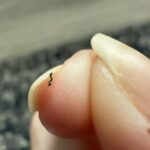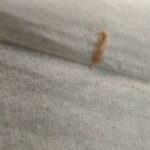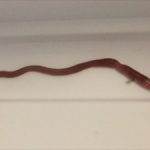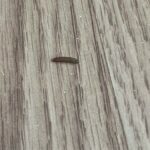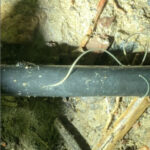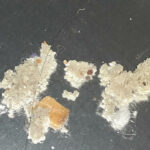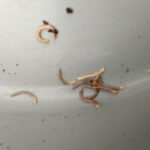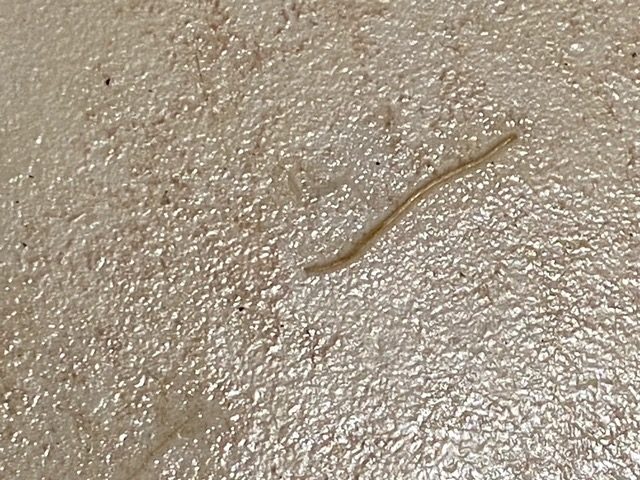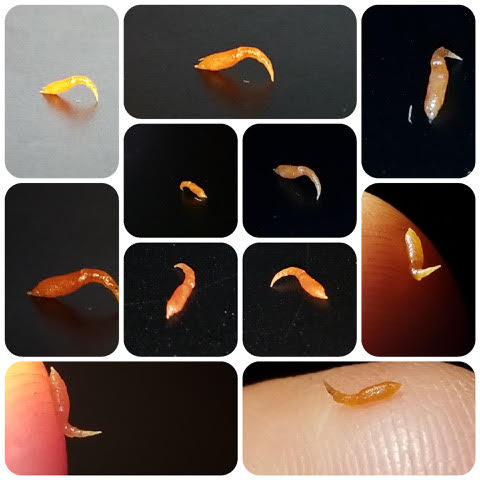The average human will rarely come in contact with a worm that actually bites. Worms can cause irritation to the skin if prolonged periods of contact occur, but the irritation is likely from debris or dirt from the ground or the tiny little bristles on worms’ skin that can prick or stick to your skin. This type of skin irritation is rarely cause for concern. A little antibiotic ointment such as Neosporin should ease itching and irritation. This will also help prevent any type of infection.
There are a number of other bites, particularly insect bites, that might be a bit more serious than skin irritation from worms. Insect bites may cause swelling, redness, bumps, itching, and pain in affected area. These symptoms are mild compared to the symptoms allergic individuals may experience. Individuals that are allergic to hornet or bee stings may experience shortness of breath, hives, wheezing, unconsciousness and even death. Symptoms usually develop within a half hour of the bite or sting. Fire ants bites cause pimple-like sores that are itchy and extremely painful. In these cases as well as in cases involving a severe internal allergic reaction, you must seek medical attention immediately.
If you have a history of severe reactions to insect bites or stings you should always carry an anaphylaxis kit. This kit could save your life. It contains an epinephrine injector, tourniquet, and an antihistamine. The injector is used to administer the shot yourself or someone else can, if necessary. The kit should only be used according to your doctor’s instructions.
Treating Minor Insect Bites
An itchy or sore bump resulting from a mosquito bite, for instance, is no cause for concern. However, there are some things you can do to alleviate any itching or swelling to the affected area. If there is any redness or pain at the site of the mosquito bite, clean the area with soap and water. You can even use peroxide if or alcohol if it will put your mind at ease. After the area is clean, simply apply ice. It is important to avoid scratching the affected area at all costs in order to avoid infection. Instead or scratching, use an over-the-counter antihistamine such as Benadryl to alleviate itching. Benadryl is available in cream, spray or pill form. Calamine lotion, commonly used for chicken pox, is also an excellent medication for itching.
Most insect bites typically clear up in a few days with proper treatment. To prevent insect/animal bites in the future there are several things you can do to protect yourself. You can use insect repellants directly on exposed skin as well as on clothing, shoes, and other gear. Permethrin-containing insect repellants are highly recommended for use on clothing and gear, and repellants such as OFF, which contains N, N-diethylmetatoluamide or DEET, is highly recommended for skin. It can also be applied to clothing for a stronger effect. It is important to note that once applied to clothing, shoes or gear, Permethrin-containing insect repellants remain on items even after repeated laundering.
You can also protect yourself against bites by wearing the right types of clothing when you are in medium to highly infested areas. You can wear long pants and long-sleeved shirts (tucked in) as well as hats and socks to protect the skin.
As stated earlier, chances are you are not one of the very few people that experience severe allergic reactions to insect bites. However, if you are one of the unlucky few and you experience wheezing, shortness of breath, chest tightness or pain, a sensation of the throat closing, faintness or weakness or a bite or wound that appears infected (excessive amounts of pus, blood, pain, swelling), please seek medical attention immediately.
All About Leeches
Yes, leeches are definitely as bad as the name sounds. These slimy creatures attach themselves to a host (humans are preferred) and they suck blood from the body. This makes leeches sanguivorous – they feed as blood sucking parasites that can ingest more than several times their own body weight in blood in one single “meal.” While a leech would love nothing more than to feed off human blood, they also feed on fish, frogs, turtles, and birds. They even feed off other leeches.
According to the Australian Museum, leeches are classified according to the different ways they feed. Some leeches have powerful jaws, while others are jawless. Some simply feed, while others swallow prey whole.
Jawed leeches or Gnatbobdellida have jaws armed with teeth with which they bite the host. The blood is prevented from clotting by production of a non-enzymatic secretion called hirudin. The land leech commonly encountered by bushwalkers is included in this group.
Jawless leeches or Rhyncobdellida insert a needle-like protrusion called a proboscis into the body of the host and secrete an enzyme, hemetin which dissolves clots once they have formed. Leeches which live on body fluids of worms and small freshwater snails possess such an apparatus.
The worm leeches or Pharyngobdellida have no jaws or teeth and swallow the prey whole. Its food consists of small invertebrates. –The Australian Museum, http://australianmuseum.net.au/
Whether jawed or jawless, leeches may be freshwater, terrestrial, or marine. Land leeches may be found in wet rain forests in low foliage or dry forests on the ground in seepage moistened areas. This does not mean that you won’t find them in puddles of water in rain forests. Although land leeches cannot swim, they can survive for a period of time under water. Some species burrow in the soil until it rains. While in the soil, the body is dry. After only a light rain, sprinkles even, the leech will emerge “fully active.” Freshwater leeches prefer slowly flowing or still streams. However, it is not uncommon to find them in fast flowing streams.
While leeches are not known to transmit disease, they can cause irritation and other allergic reactions in hosts, as well as an infection or blood poisoning. In addition, a leech bite can bleed for hours if not treated. First, you must remove the leech by pushing the leech off the skin from the skinny end. Push the leech sideways to prevent the leech from discharging the contents of its gut into the bite. This can cause an infection and possible blood poisoning. Again, this is the best technique for removing leeches. Techniques such as ripping the leech off without thinking, heating it or pouring salt over it can be dangerous.
To repel leech bites, rub soap lather on exposed areas of the skin and let it dry. You may also apply eucalyptus oil, tropical strength insect repellent, or lemon juice to the skin and even the clothing. Leech socks are also extremely effective in protecting the skin from leeches. Leech socks are tightly woven, light-colored “socks” that fit over outer garments.
After you have safely removed the leech, you should wash the wound with soap and water and apply a cold pack if pain or swelling is present. Keep the wound clean until it heals. If you follow these steps, and you have no leech allergies and are in good health, you should have no problems healing. If you experience swelling around the lips and eyes, red blotches on the skin, an itchy rash, infection, or ulcer, go to the hospital immediately!
All About Worms is always free, always reader-supported. Your tips via CashApp, Venmo, or Paypal are appreciated! Receipts will come from ISIPP Publishing.



